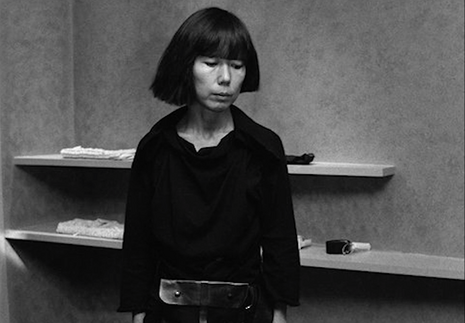Comme des Garçons MET the expectations
Robyn Schaffer explains why the MET Gala decided to pay homage to Rei Kawakubo in its 2017 edition

The Metropolitan Museum of Art’s annual Costume Institute Gala (better known as the Met Gala), which marks the opening of the museum’s fashion exhibit for that year, is arguably the biggest night in fashion.
The exhibit’s theme also serves as the theme of the Gala, with guests expected to dress accordingly. Each year, celebrities and fashion’s finest attend the world-renowned event, which has recently been the subject of a documentary entitled The First Monday in May (alluding to the tradition of the Gala being held on this day each year), which followed the creative process in the run-up to the 2015 Gala. Past themes have included ‘AngloMania: Tradition and Transgression in British Fashion’, ‘Alexander McQueen: Savage Beauty’ and ‘Punk: Chaos to Couture’. Recently, however, it was announced that the 2017 theme would be ‘Rei Kawakubo/Comme des Garçons’. So, what can we expect?
Comme des Garçons is a globally recognised and boundary-breaking French label, yet the woman behind the brand, Rei Kawakubo, is far more clandestine. The Japanese-born designer, who set up her label in Tokyo in 1973, has always chosen to remain under the radar and out of the limelight, instead letting her clothes and brand speak for themselves.
Comme des Garçons has often been described as an ‘anti-fashion’ label, with Kawakubo having frequently adopted minimalist colour palettes and silhouettes, yet also indulging in theatrical, abstract and conceptual ideas in her collections akin to those of Alexander McQueen and Gareth Pugh, making her creations the perfect subject for a museum exhibition.
Kawakubo’s latest collection, for the Spring/Summer 2017 season, demonstrated these qualities perfectly. Admittedly, despite being largely unwearable, the theatrical, artistic approach taken by Kawakubo is something rare and unique in the fashion industry these days. Amidst a throng of labels whose designs bear many resemblances, Kawakubo is one who chooses rather to explore and manifest concepts through her clothes, keeping her audience constantly wondering and in awe.
The collection was centred primarily around oversized, structural pieces in blacks, reds and whites which swathed the body and distorted the female silhouette, taking ordinary ideas and pieces of clothing and transforming then into mutant versions of themselves as if from a parallel world. It is evident from this collection and many others of Kawakubo’s that she is a designer who has never desired to play by the rules, opting instead to pursue her own ideas and inadvertently creating her own trends which influence the rest of the industry.
Thus, the marriage of Comme des Garçons with the Met Gala appears to be a match made in heaven. The performance-art-inspired nature of Kawakubo’s designs make her clothes ideal for museum viewing; unlike the more ‘ordinary’ clothes of other brands, Kawakubo allows her clothes to tell a story while simultaneously inviting the viewer to interpret this story for themselves.
As for the Gala, we may expect (if the guests abide by and pay tribute to the theme, which is not always the case) more structurally interesting and boundary-pushing costumes, which will force celebrities to jump out of their comfort zones and experiment with fashion as they never have before – which is perhaps precisely the point
 News / Uni Scout and Guide Club affirms trans inclusion 12 December 2025
News / Uni Scout and Guide Club affirms trans inclusion 12 December 2025 News / Cambridge Vet School gets lifeline year to stay accredited28 November 2025
News / Cambridge Vet School gets lifeline year to stay accredited28 November 2025 News / Cambridge study finds students learn better with notes than AI13 December 2025
News / Cambridge study finds students learn better with notes than AI13 December 2025 Science / Did your ex trip on King’s Parade? The science behind the ‘ick’12 December 2025
Science / Did your ex trip on King’s Parade? The science behind the ‘ick’12 December 2025 News / Pembroke to convert listed office building into accom9 December 2025
News / Pembroke to convert listed office building into accom9 December 2025







